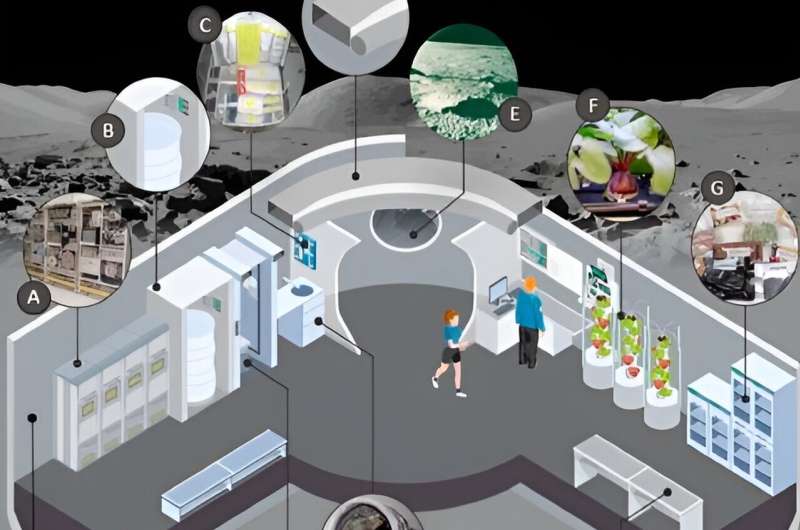
August 28, 2024 by Andy Tomaswick, Universe Today
Collected at: https://phys.org/news/2024-08-biofilms-hinder-spaceflight.html
As humans spread into the cosmos, we will take a plethora of initially Earth-bound life with us for the ride. Some might be more beneficial or potentially harmful than others. And there is no lifeform more prevalent on Earth than bacteria. These tiny creatures and fungi, their long-lost cousins on the evolutionary tree, have a habit of clumping together to form a type of structure known as a biofilm.
Biofilms are ubiquitous in Earth-bound environments and have been noticed on space missions for decades. But what potential dangers do they pose? More interestingly, what possible problems can they solve?
A paper from a group of scientists focused on life support systems in the journal Biofilm provides a high-level overview of the state of the science of understanding how biofilms work in space and where it might need to go for us to establish a permanent human presence off-world.
The paper is divided into five sub-sections, each of which examines how biofilms might impact them. The first two sub-sections focus on wet and dry areas of an object in space, while the third focuses on the potential impact on human health. Further sections include a focus on in-situ resource utilization (fourth) and biosensors (fifth). Let’s examine each one in turn.
Wet surfaces are probably the place most people would expect to see a biofilm. They are ubiquitous in uncleaned toilets and other areas where a continual source of nutrients and water are available. Unfortunately, space stations and crewed spaceships have the same necessary biological plumbing and could suffer from the same problem if not managed.
However, they also have wet storage areas, like the water reclamation system or fuel tanks, that aren’t necessary for Earth-based systems. All that means there are plenty of areas where biofilms can pollute these systems and cause significant problems either mechanically or biologically for the crew.
Dry surfaces are essentially the same, though tracing the spread of the bacteria is trickier as typical deposition systems, like the settling of an aerosol from a person breathing, which happens to contain thousands of bacteria, isn’t as much of a problem in space. However, astronauts still touch surfaces which deposits bacteria as well, and their breath has to be recycled in air cleaners, which could lead to deposits near or even on the HEPA filters that keep the air in the craft fresh.
Either way, those biofilms could prove problematic to the human occupants of any spacecraft.
There are two main ways they can create problems—either through infections, especially if the astronauts drink contaminated water, or through allergies, which could be caused by things like black mold. Unfortunately, we don’t understand what, if any, impact microgravity has on all of these processes, including fundamentals like how virulent pathogens might become.
However, it’s not all doom and gloom regarding biofilms in space exploration. Some biofilms can be helpful—especially by filtering valuable materials. Biofilm reactors are becoming more common in Earth-bound processes, whereby they can capture valuable materials like platinum from wastewater streams of mines or recycling plants.
A similar tactic could work on Mars, where bioreactors could filter out useful molecules like nitrogen from the atmosphere and allow human-made systems to access those resources.
However, such systems would be useless if they weren’t controlled, and developing biosensors to monitor the health of biofilms —or lack thereof if they happen to be dangerous—will be a crucial innovation for future permanent space exploration missions.
Several sensors are coming on the market that could fill that need, but more experimentation is needed to see how effective they are in microgravity.
Ultimately, humans will have to learn to live to co-exist with biofilms in space, just like we do down on Earth. Whether that relationship is adversarial, symbiotic, or some combination of both will be primarily up to us.
But, as mentioned in the paper, and that holds for most things in the realm of science, it would be good if we had a better understanding of how these systems work in this new environment. Otherwise, we might be setting ourselves up for a very avoidable disaster.
More information: Yo-Ann Vélez Justiniano et al, Mitigation and use of biofilms in space for the benefit of human space exploration, Biofilm (2023). DOI: 10.1016/j.bioflm.2022.100102

Leave a Reply